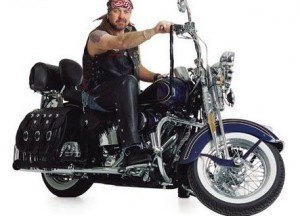
BACKGROUND
Founded in 1917, Harley flourished during World War I as the first motorcycle to be broadly adopted for combat services. By the 1970’s, the design had remained basically unchanged. The bikes were expensive and far inferior in performance, handling, and quality to Japanese motorcycles. The brand name was mocked as “Hardly Able.”
SOLUTION
As the Harvard Business Review tells it, after examining every aspect of their business, “Harley management recognized the brand had developed as a ‘community-based phenomenon.’ The ‘brotherhood’ of riders, united by a shared ethos, offered Harley the basis for a strategic repositioning as the one motorcycle manufacturer that understood bikers on their own terms.”
Harley’s execs, required to spend time in the field with customers, were charged with bringing insights back to the firm. What did they discover after looking at everything? The company’s most valuable asset was its customers.
On the brink of bankruptcy, the company fundamentally changed the way it did business to:
- Show customer appreciation instead of hard selling
- Speak to shared interests before product benefits
- Bring advocates together and let them help build new relationships
TODAY
That change in doing business turned around Harley from a bankrupt company to a leadership brand. Today, there’s probably no better example of a brand defined by customer loyalty, advocacy and community than Harley.
One living testament viewable online is a brand community called HDTalking. Here, Harley owners share pictures, their vacations, jokes and where to get hard to find parts. It’s not only a community but a marketplace where customers buy, sell and customize Harleys with other Harley enthusiasts. Plus, there are at least 7 Harley mechanics online at all times.
There are over 36,500 advocates in this Harley community and it grows at a rate of 40%+ a year. But it isn’t put up by the company. It is built entirely by Harley loyalists and maintained entirely with user-generated content. They even welcome every new member by name, including their newest, SpyDer Monkey.
The brand community is a negligible marketing expense and a major source of business vitality. Imagine the return on investment and the annuity to the brand every year.
LESSONS LEARNED
In the early 2000’s, with their landmark study on brand communities, Thomas O’Guinn and Alfred Muniz concluded it’s part of our DNA as human beings to share our brand experiences with others, especially if they’re favorable. Maybe that’s why 4 out of 5 people write positive reviews online (source: Groundswell) and communities like HDTalking demonstrate this principle of human behavior.
Below is a brand video that show the shared ethos of the Harley community maybe better than words can. It’s done by another brand doing business with them.
How well do you know your advocates and are you showing appreciation for what they can do for your brand?





Good post, I always like them.
[…] How a community saved a brand from bankruptcy: Case study […]
I’m a recent grad just trying to learn more about the advertising industry and I really enjoyed reading your article. Keep up the great job!
Thanks for the fantastic information and facts proper now. I absolutely adore your content and will are provided rear rapidly.
hey, nice blog…really like it and added to bookmarks. keep up with good work
I can’t think of anything erroneous to say about your write up. Hats off!